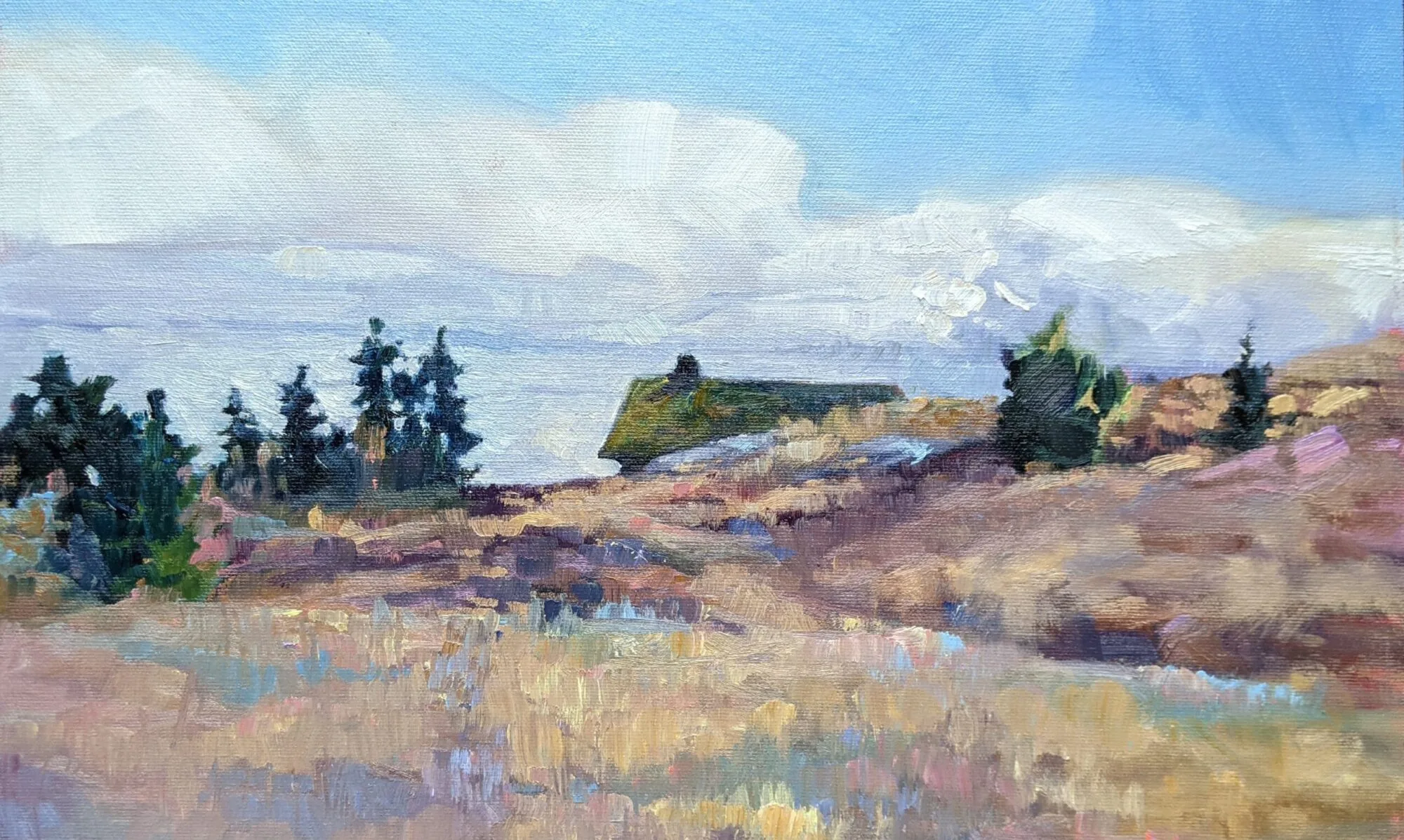Yesterday I went all digital on a schooner. Allowing for the learning curve, this has potential.
 |
| Underpainting of American Eagle passing Owl’s Head, by Carol L Douglas |
I’ve toyed for a while with the idea of doing a large,
Fitz Henry Lane-influenced scene of the
American Eagle under sail. A large canvas of a boat in motion is not something you do
en plein air, but the studies I’ve done in harbor certainly influence it.
A student recently asked me if I like painting ‘just water.’ I do, indeed, because to me there’s no such thing as ‘just water.’ There’s light, reflection, movement, the skipping of the wind, clouds, and promise. I showed him the wave study I did while cruising on the American Eagle last spring. That is the closest I get to a purely personal painting, one that has meaning for me and nobody else.
 |
| This field study of waves from last summer was the genesis of the painting above. |
It was also the genesis of this larger idea. What better landform to use as a background than
Owl’s Head, which sits just outside Rockland harbor, and where I paint many times every season?
When enlarging a sketch to a final composition, I generally use gridding, which I’ve explained
here. It’s laborious and time consuming. It’s also extremely accurate and allows you to execute a pretty decent
grisaille on the fly, depending on how much time you want to spend.
 |
| The horizon has to be straight on a nautical painting, or else the oceans will run dry. |
My daughter gave us a cast-off video projector last year. Yesterday I decided to experiment with it. I haven’t used projection to enlarge a sketch since the demise of 35mm slides.
These projectors are designed to shoot an image high on a wall, so they are set up to correct for the
keystone effect, which is the distortion you get when you project an image at an angle. Once I managed to undo that correction, squaring the image was relatively easy. Making it exactly the size of my canvas was harder.
 |
| Level and square relentlessly. |
I started with relentless leveling and squaring. The easel was perpendicular to the floor, the canvas leveled, the two lower corners the exact same distance to the projector. Even with all those preparations, the image was slightly canted. Fixing that took a lot of fussing.
From there, it was just a question of tracing the lines in the original sketch. However, my ability to see differences in value was vastly reduced.
 |
| I couldn’t see values but it was a neat optical effect. |
Lest you think tracing is the answer to all your drawing problems, it’s still possible to make drafting errors. Note the slight sag in the bowsprit. I’ll fix that in the next iteration.
With all my fussing, I was able to finish underpainting this 30X48 canvas in a single day. There’s promise there.
 |
| It’s anemic compared to my usual gridding, but I still think it has potential. |
I tell my students to use a combination of ultramarine and burnt sienna for their initial drawing, but in practice I generally use leftover paint for this step. The exact color isn’t nearly as important as the value. Yesterday, I chose an old tube of Williamsburg Brown Pink. I don’t use this brand because I find the pigment load in the blues to be too low for my style.
That wasn’t true with this color. This morning my whole studio is swimming in a butternut-colored haze. There is brown stain everywhere—creeping along the canvas, in my brushes, on my hands, possibly in my hair.





























